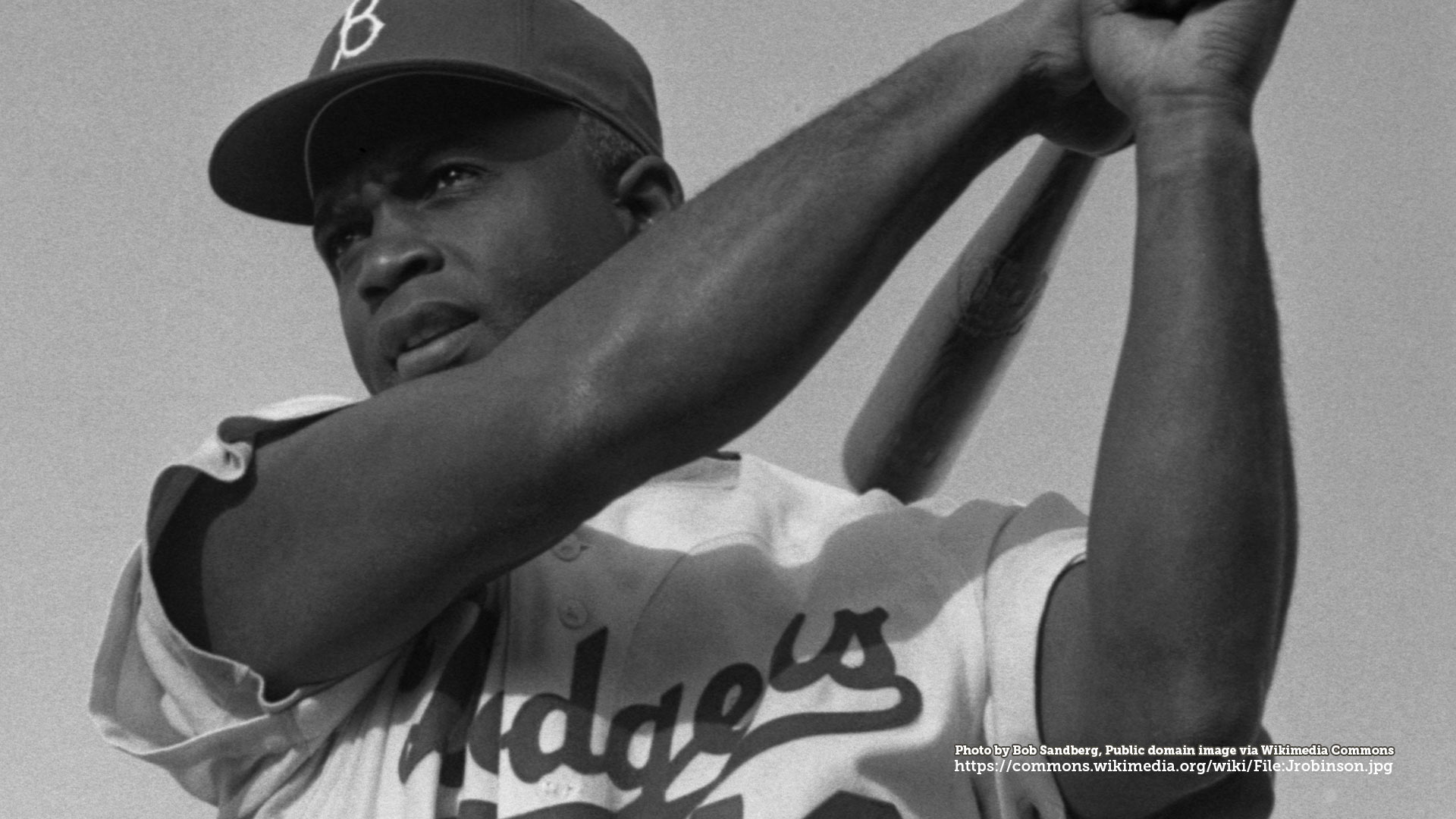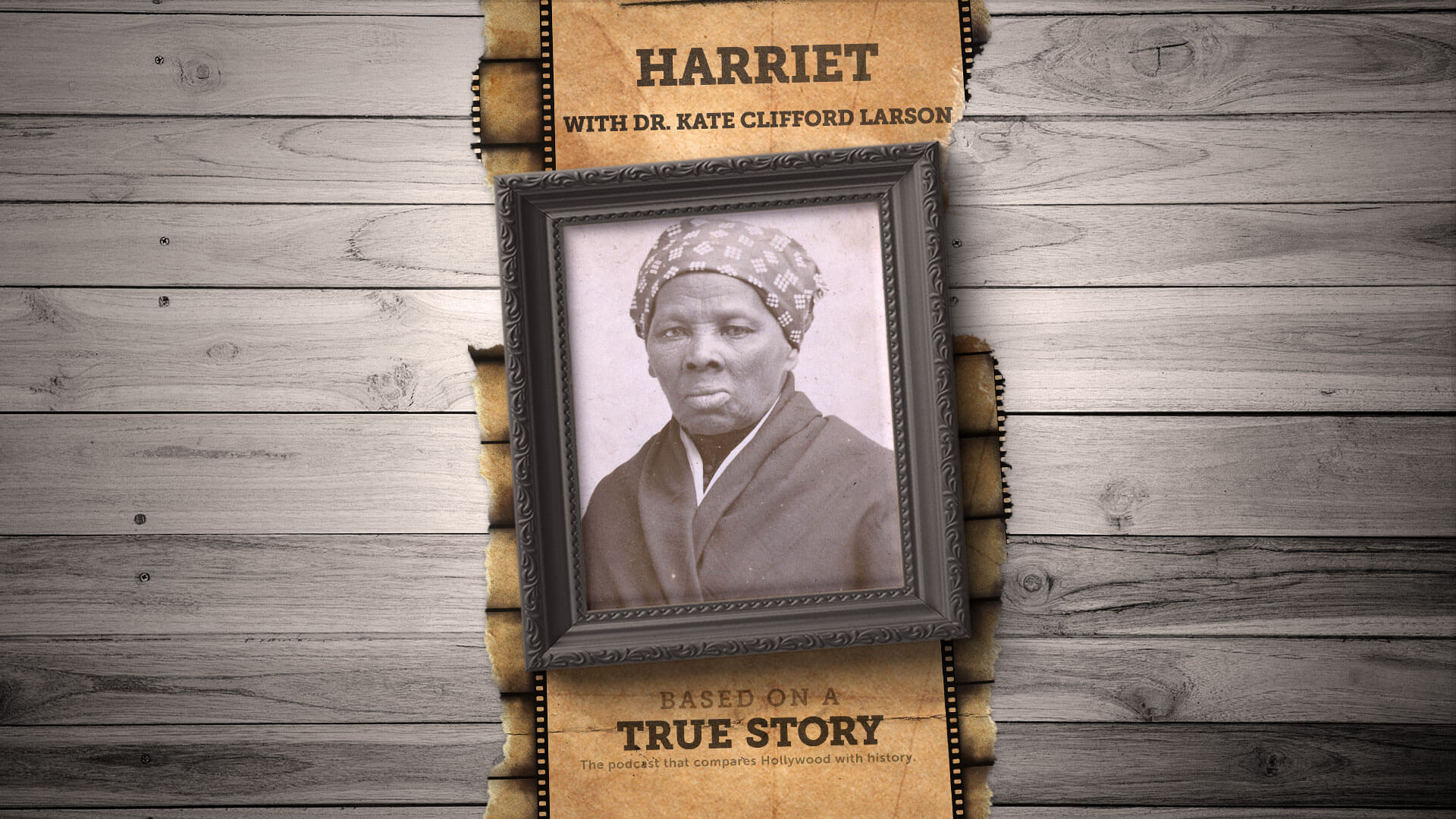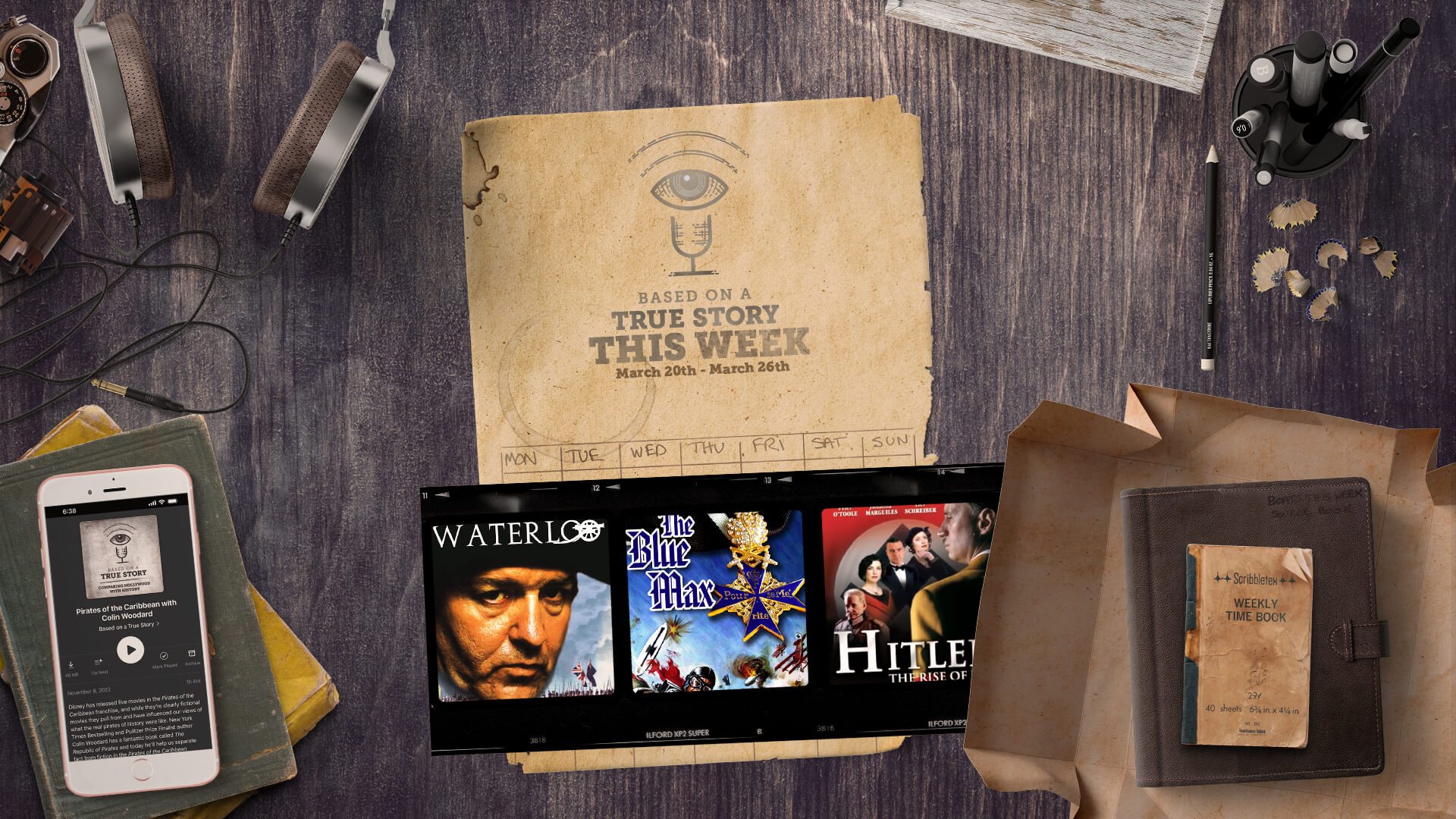In this episode, we’ll learn about historical events that happened this week in history as they were depicted in Waterloo, J. Edgar and Amelia.
Did you enjoy this episode? Help support the next one!
Disclaimer: Dan LeFebvre and/or Based on a True Story may earn commissions from qualifying purchases through our links on this page.
Transcript
Note: This transcript is automatically generated. There will be mistakes, so please don’t use them for quotes. It is provided for reference use to find things better in the audio.
June 15, 1815. The Netherlands. Modern-day Belgium.
We’re in an elegant ballroom filled with well-dressed men and women. Most of them are watching the men dancing to the music of bagpipes. We can see five sets of men in the frame, four men in each set and they’re dancing in very orderly fashion—so four men dancing in one set, another four in another set and so on.
The camera focuses in on a few of the people watching the dance. All the men seem to be dressed in their fine military uniforms while all the ladies are wearing beautiful dresses. It’s a very fancy affair.
The music stops at precisely the same time as the dancers and everyone claps. Then, the band of bagpipes and drums start up a new song. The dancers form a line with swords doing a military dance of sorts. This time, the band joins in marching along the ballroom floor for the approving guests. As they march out of the room, the music fades away and everyone turns as Christopher Plummer’s character, the Duke of Wellington, enters the room.
Wellington walks arm in arm with Virginia McKenna’s character, the Duchess of Richmond, as Wellington criticizes his own men in the room. They don’t hear this, of course, but Richmond says something like, “And you expect them to die for you?” Wellington just says, “Mmhmm,” and Richmond responds, “Out of duty?” Wellington again, this time with a smirk on his face: “Mmhmm.”
Richmond laughs, saying that she doubts even Bonaparte could draw men to him by duty. Wellington says, well, Bonaparte is not a gentleman.
In the next shot, we see Rod Steiger’s character, Napoleon Bonaparte, on his horse outside. In the background we can hear it’s raining and he tells one of his men they’ll cross the river and tomorrow we’ll dry out our feet in Brussels. It may be dark and foggy out, but we can see countless soldiers marching in unison as they cross a river. Some on horseback, some on foot. Some cross on a bridge, some—especially those on horses—cross through the river itself.
Back in the ballroom, there’s more music and dancing. It’s not the same soldiers dancing to bagpipes as before, but now the music is more what we’d expect in a ballroom with men and women all dancing together happily. After some time of this, we can see a soldier arriving who is wearing what looks to be a cross on his uniform. His overall uniform is different than the rest of the soldiers there. He finds the Duke of Wellington and tells him about Napoleon. Wellington says he’s aware Napoleon has crossed the border.
We can tell from the dialog that this man’s name is Muffling, and he’s played by John Savident. Muffling tells Wellington that Napoleon has all his horses, and he’s come between both our armies.
Wellington asks where, to which Muffling replies: “At Charleroi.”
A smile crosses Wellington’s face. He starts giving orders to his generals to start their soldiers marching to Charleroi.
This scene is how the 1970 film Waterloo sets up what would be a sequence of events that would be Napoleon’s final defeat at Battle of Waterloo. And it was, just like the movie shows, against Arthur Wellesley, the Duke of Wellington. That battle was actually June 18th, but I mentioned June 15th at the start of this segment because that’s when the movie has the text on screen establishing the date.
Something the movie doesn’t really explain, though, is who the Prussian named Muffling is. He’s the one telling the Duke of Wellington about Napoleon’s movements in the movie.
The real Karl von Müffling worked for Generalfeldmarschall Blücher, who was leading the Prussian army, but he worked in the Duke of Wellington’s headquarters as Blücher’s liaison officer.
As a little side note, the British and Prussians were part of the Seventh Coalition, which included a number of countries that were allied together to try and end Napoleon’s rule. There were over 600,000 soldiers in armies from different nations and Napoleon wanted to defeat the armies separately before they could join together.
For the events that happened this week in history, the movie was correct to mention Charleroi, that’s nearby where Napoleon crossed the Sambre river on June 15th. At about 2:30 PM on the next day, Napoleon attacked Blücher’s Prussian army near the town of Ligny.
The Battle of Ligny was a victory for Napoleon. Of course he didn’t know it at the time, but that would end up being Napoleon’s final victory in battle.
Although he won the battle, he didn’t defeat the entire Prussian army. So, Napoleon split his army at this point, sending about a third of his army after the retreating Prussians.
With the rest of his army, he went to face the Duke of Wellington. They met two days later, on June 18th, 1815. Napoleon had about 72,000 soldiers while Wellington had about 68,000. That number changed, though, once 50,000 of Blücher’s Prussian army joined the battle in the afternoon.
When the day was done, there were about 42,000 French casualties to about 24,000 on the other side—17,000 in Wellington’s army and 7,000 in Blücher’s.
If you want to watch the multiple events that happened this week in history, check out the 1970 film Waterloo. The text on the screen telling us it’s June 15th, 1815, is at about 35 minutes and 43 seconds into the film.
Then, of course, there’s the battle itself that we didn’t really talk about. As you can probably guess by the title of the movie, that’s most of it—so that’s why we didn’t cover it all. But if you want to learn more about the true story, we covered that back on episode #174 of Based on a True Story.
June 15, 1924. Washington, D.C.
We’re in a dimly lit office. The lamp on the desk is off, but there is some natural light coming in through the window blinds. Leonardo DiCaprio’s character, J. Edgar Hoover, is wearing a nice suit as he stands behind a black, leather chair in the office.
In the foreground there’s another man listening as Hoover explains he has files on potential suspects and with a congressional hearing…
The man behind the desk cuts him off.
On the other side of the desk, also standing, is Ken Howard’s character, Harlan Stone. Stone reminds Hoover that he didn’t call the meeting, Stone did. He invites Hoover to sit, and does the same.
Both men are now seated across from each other with Stone’s elegant, wooden desk between them.
Stone goes on to tell Hoover that everyone he’s worked with is gone, and there’s a reason for that. This Bureau is of exceedingly bad odor, would you agree?
Hoover agrees.
Stone goes on to mention Hoover has no social life. No wife, no girlfriend, and no pals at all.
Again, Hoover confirms.
Stone continues, talking about Hoover’s fixation on fingerprinting. Stone calls it a speculative science at best.
Hoover agrees, although the look on his face tends to indicate perhaps he doesn’t actually agree with this.
Stone asks about Hoover’s nickname, Speed. At this, Hoover stutters a bit. Then, we find out what this conversation is all about when Stone tells Hoover that he wants him to take over as acting director of the Bureau of Investigation.
This brief scene comes from the 2011 movie called J. Edgar and while the conversation is made up for the movie—like most dialog is, of course, it is showing an event that really did happen this week in history when then-Attorney General Harlan F. Stone appointed J. Edgar Hoover as Director of the Bureau of Investigation.
At the time, Hoover was just 29 years old, and he’d be pivotal in the Bureau of Investigation turning into the Federal Bureau of Investigation 11 years later, and J. Edgar Hoover would be the first director of the FBI for the next 37 years.
So, while the specifics of the conversation are dramatized for the film, this marks an important event in history as Hoover’s life would end up being both instrumental in the formation of the FBI as well as controversial for abusing his power as head of the FBI.
If you want to learn more about him, I had a chat with Paul Letersky, who is a former FBI agent that worked as J. Edgar Hoover’s personal assistant. We talked about the historical accuracy of the 2011 J. Edgar movie, and you can hear that back on episode #185 of Based on a True Story.
June 17, 1928. Newfoundland.
The scene in our next movie is quite a contrast from the dimly lit office in our last segment. This is a beautiful view of nature. We’re looking down a river, the water is very calm and still. On the left side of the frame, trees line the bank of the river. On the right side, a big red building sits, partially hanging over the river. Even though you can’t feel temperature through a movie, the heavy fog sitting over the entire scene makes me think it’s probably a chilly morning.
In the next shot we can see two men and one woman standing on the bank of the river next to a dock leading out to a big, red airplane that’s sitting on the water. The word “Friendship” is written on the side of the plane.
One of the men walks down the dock and gets into the plane. The woman follows behind, then she turns around and calls to the man still on the bank of the river. She tells him to read tomorrow’s paper because we’ll both be in them!
Then, Hillary Swank’s version of Amelia Earhart gets in the plane. The engines on the plane roar to life as the last man runs down the dock and hops in the plane. The camera switches to inside the plane and we can see the two men in the cockpit with Earhart in the back. One of the men calls back to her to start the clock, which she does, just as they push the throttle forward and the plane takes off.
This is just the beginning of the sequence, but it’s showing how the 2009 movie Amelia shows an event that took place this week in history when Amelia Earhart became the first woman to fly across the Atlantic Ocean as a passenger. They took off from Trepassy Harbour, Newfoundland, on June 17th, 1928, and then 20 hours and 40 minutes later they landed in Burry Port, South Wales.
To add a little more historical context, though, the event I just described wasn’t the first time Earhart pushed the limits of flying. For example, in 1922 she set an unofficial altitude record for female pilots at 14,000 feet. That’s about 4,267 meters. She also became only the 16th woman to get an international pilot’s license in 1923.
Then, after a few years off from flying because of her parent’s divorce, Amelia Earhart was really launched into the public consciousness with the flight this week in history, the one we saw happen in the movie.
And just like we see in the movie, the airplane she made this flight with was a seaplane named “Friendship.”
Wilmer Stultz was the pilot, the co-pilot was Louis Gordon and Amelia Earhart was a passenger. Although that brief little line in the movie where we hear Hillary Swank’s version of Amelia saying to keep an eye out for tomorrow’s newspaper because they’ll be famous…while it is true this flight practically made her an aviation star overnight, I saw something in my research where she was quoted afterward as downplaying the event.
After all, she was a passenger.
“Stultz did all the flying—had to,” Amelia Earhart was quoted as saying, “I was just baggage, like a sack of potatoes. Maybe someday I’ll try it alone.”
And that she did.
A little less than four years later, in May of 1932, Amelia Earhart became the first woman to fly solo across the Atlantic. We covered that event back when it happened in the month of May on BOATS This Week, episode number #248.
But if you want to watch the event that happened this week, the text on the screen saying it’s June 17th, 1928 starts at about 15 minutes and 10 seconds into the movie.
Share this:
- Click to share on X (Opens in new window) X
- Click to share on Facebook (Opens in new window) Facebook
- Click to share on Reddit (Opens in new window) Reddit
- Click to share on Pocket (Opens in new window) Pocket
- Click to share on LinkedIn (Opens in new window) LinkedIn
- Click to share on WhatsApp (Opens in new window) WhatsApp
- Click to share on Telegram (Opens in new window) Telegram
- Click to email a link to a friend (Opens in new window) Email
- Click to print (Opens in new window) Print



